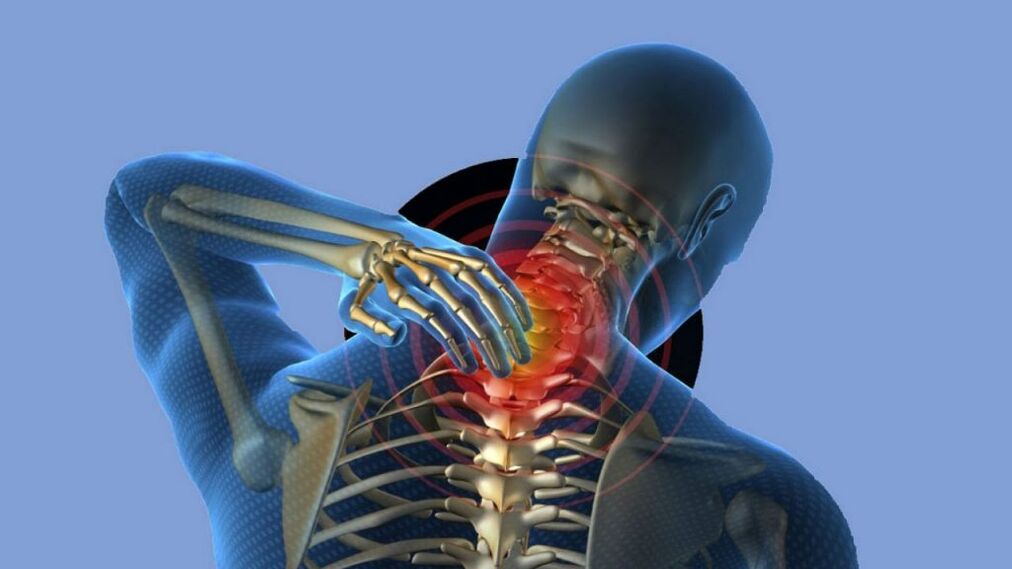
Under the osteochondrosis of the cervical column it means a degenerative dyeing pathology that affects the discs located between the vertebrae.The disease is diagnosed mainly in people from 30 to 50 years, but can occur in a different age.It is important to promptly identify the pathology and conduct adequate treatment.If this is not done, the disease will move on to a new development phase, which can cause the need for surgery in order to replace intervertebral discs with prostheses.
Causes of the disease
The osteochondrosis of the neck occurs for the following reasons:
- sedentary lifestyle;
- obesity;
- improper nutrition;
- Previously it has undergone injuries to the spine, especially if the segments of the cervical region had been damaged;
- excessive physical activity;
- It remains in the same pose with a head inclined for a long period - for this reason, the pathology is often diagnosed in the employees of the office that work on the computer;
- genetic predisposition;
- unstable emotional background;
- hypothermia of the neck;
- Autoimmune pathologies, following the development of which the cartilage tissue is injured;
- Wronty structure of the spine diagnosed by birth.
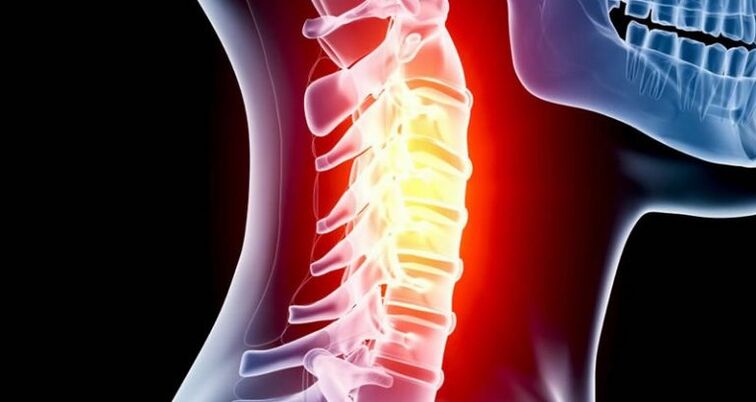
The development of the osteocondrosis of the cervical region is also facilitated by a genetic predisposition.
Degree and type of disease
Cervical osteochondosis crosses different development phases, each of which has some symptoms:
- The disease of the first phase.This is the beginning of the development of the pathology.The patient has pain in the affected area, which intensify during movement.This phase is also characterized by the tension of the rear muscles and rapid tiredness.The pathology in this phase does not need therapy.The disease can be eliminated using the correct power supply system, exercise therapy and abandonment of harmful addictions.
- The second phase of the pathology.The disease progresses, affecting intervertebral records.Their height decreases, which leads to a reduction in the distance between the vertebrae and the pinches of the nerves.As a result, pain syndrome becomes more pronounced.It intensifies when his head moves and gives it behind or to the hands.These symptoms also appear: inattention, fatigue, pain in the head area.For the treatment of pathology, drugs are prescribed.
- The third degree of the disease.The hernias of the intervertebral discs begin to form.Pain syndrome has improved.The pain is located in the neck and head and gives behind and to the hands.The dizziness appears, the patient is weak.The neck loses mobility.Above all, acute adhesion is felt in the morning.
- The fourth stage of the disease.The intervertebral discs are completely destroyed.Their place is occupied by the connective tissue.The pain intensifies and does not disappear even during sleep, the neck stops almost completely to turn, the dizziness becomes more frequent, the patient loses the coordination of movements and there is noise in the ears.
Clinical image
Schop's osteochondrosis occurs in different ways, depending on the injury of specific segments.However, there is a characteristic of the general symptoms of the injury of any vertebra of the department:
- Pain syndrome in the head, giving the chest, arms, behind;
- vision of vision and hearing;
- I crunch when moving the neck;
- numbness of the fingers of the upper ends and the end of the language;
- weakness in the muscles of the arms, legs;
- Increased blood pressure.
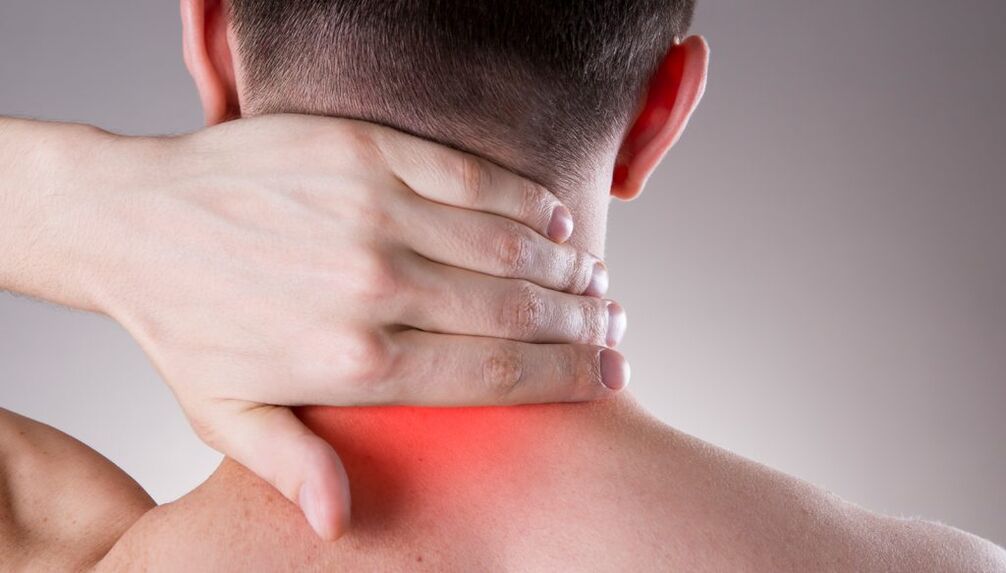
The pathology is also characterized by some syndromes, each of which is discussed in detail below.
Radio syndromes
With cervical osteochondrosis, the nerves are pinched, due to which a flowing pain syndrome occurs.The pain gives behind and to the hands.The following symptoms also appear:
- Small pimples behind the hair on the epidermis, which in ordinary people call goosebumps;
- tingling of the skin;
- loss of elasticity and elasticity of the epidermis;
- swelling of soft tissues;
- Pallor of the skin.
Vail artery syndrome
Characterized by the following symptoms:
- burning or pulsating pain, constant or paroxysm, which intensifies when the head moves or remains in a length for a long time;
- dizziness and fainting;
- nausea;
- loss of coordination of the movement;
- noise in the ears and deterioration of hearing;
- pain in the eye;
- vision of vision.
Cervical migraine syndrome
If the osteochondosis of the cervical spine occurs, this can lead to the appearance of cervical migraine syndrome.In this case, the nodes of the sympathetic column are irritated.As a result, there are problems with the brain and blood circulation vessels.This leads to a regular increase in blood pressure characterized by the following symptoms:
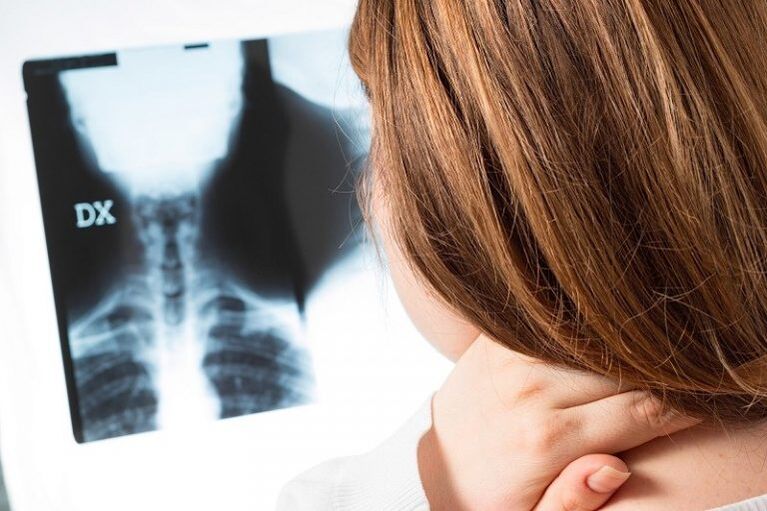
- heart rate;
- noise and ringing in the ears;
- The hearing worsens.
Hypertension syndrome
If the osteochondrosis of the cervical column has caused the occurrence of hypertension syndrome, the patient increases intracranial pressure.Such symptoms appear:
- Pain burst;
- nausea with vomiting;
- Increase in body temperature.
When examining the blood, an increase in the erythrocyte settlement rate will be indicated.
Diagnostics
To diagnose the pathology, instrumental research and laboratory tests are prescribed.
Instrumental
If signs of osteochondosis of the cervical region occur, it is recommended to consult a doctor.Only a specialist can diagnose a pathology.For this, a professional prescribes this instrumental research:
- X -raggi.This study is rarely prescribed, since it does not give a complete idea of the development of the pathology, in particular on the fourth phase of the disease.
- Ct.It helps identify the changes that occurred in the vertebrae.However, this study cannot determine the presence of hernias between the segments, which means that it will not say anything about their shape and size.
- Mri.It helps to identify any violation of the spine, including intervertebral hernias.
- Ultrasoni Duplex.This study is prescribed if there is a suspicion of problems with blood circulation on the vertebral column vessels.The Duplex ultrasound will show the presence of blood flow disorders, as well as obstacles that interfere with the normal course of blood.
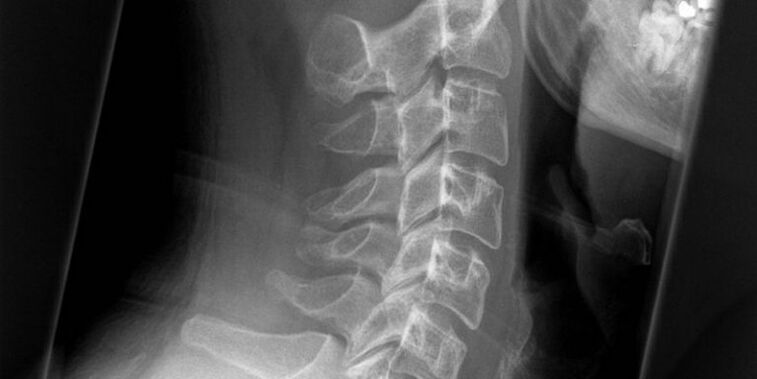
Laboratory
With cervical osteochondrosis, an examination of general and biochemical blood is also prescribed.These studies do not help to diagnose the pathology, but the doctor can determine the patient's state of health, as well as obtaining information on the inflammatory process.
Traditional treatment
The treatment of cervical osteochondosis of the spine is prescribed by a doctor.Therapy is very difficult and requires a long period.Treatment aims to inhibit the development of the disease and eliminate symptoms.For this reason, medicines, physiotherapy, operating therapy and other procedures are prescribed.If conservative therapy has not given the desired result, surgery is performed.
First aid for exacerbations
The emergency room should be provided to the patient if he suffers from severe and unbearable pain and if his neck has blocked himself in a position.It is recommended to immediately call an ambulance team and before the arrival of the specialists, it is necessary to act as follows:
- Rubs a analgesic ointment in a sore point.
- Give the patient an analgesic.
- To make a compress with camphor: this will help to restore joint mobility, improve blood microcirculation and relieve pain.
Before the arrival of the doctors it is impossible:
- Try making a massage to the patient.A wrong movement will lead to an aggravation of the situation.
- Rub the heating ointment in the wounded segment.If the pathology is accompanied by an inflammatory process, the use of this tool will lead to a deterioration of the situation.
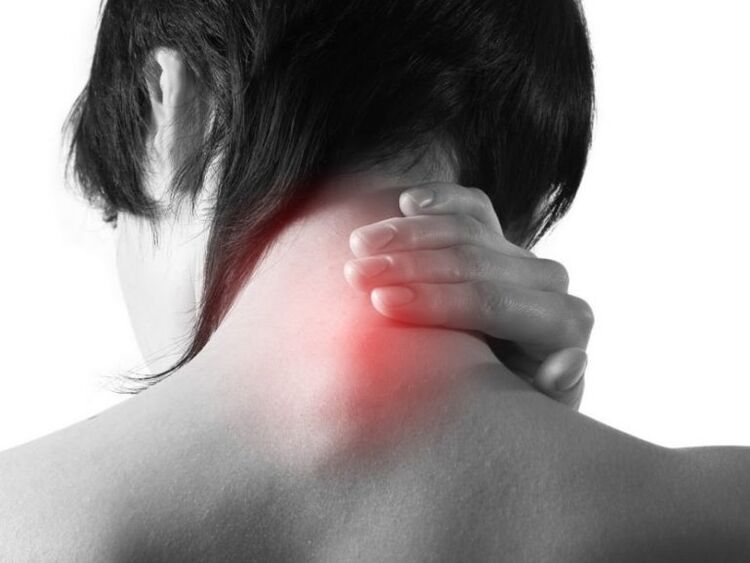
Emergency specialists to solve the problem on the spot or bring the patient to the hospital.The treatment of cervical osteochondrosis will be prescribed after diagnostic measures.Usually, after the emergency room, the patient is discharged home to undergo the therapy on an outpatient basis.
Drug
The treatment of the osteocondrosis of the cervical column is based on the use of these drugs:
- Non -pounding agents with anti -inflammatory properties.These drugs get rid of the symptoms of the disease.The funds also stop the inflammatory process and save the traumatic nerve from swelling.The tablets are consumed 2-3 times a day after eating.The duration of the therapy is 2-3 weeks.
- Musorelassanti.They get rid of muscle spasm and toning muscle tissue.
- Corticosteroids.These are hormonal drugs.The means are prescribed only if other drugs have shown their inefficiency.Medicines have a large number of contraindications and side effects, so you can use them for therapy only as prescribed by a doctor.
- Diuretics.Relieve the body from the excess fluid.Thanks to this, the drugs contribute to the removal of the swelling of the soft tissues on the site of the inflammatory process.
- Blocks.Doctors usually prescribe subcutaneous or intramuscular drugs.The drugs are administered in different points in the wounded vertebrae area.This allows you to stop pain syndrome.
- Condroprotectors.They stop the development of the pathology and contribute to the restoration of the wound cartilage.
- B.'s vitamins improve metabolism and neuromuscular conductivity.
Surgical
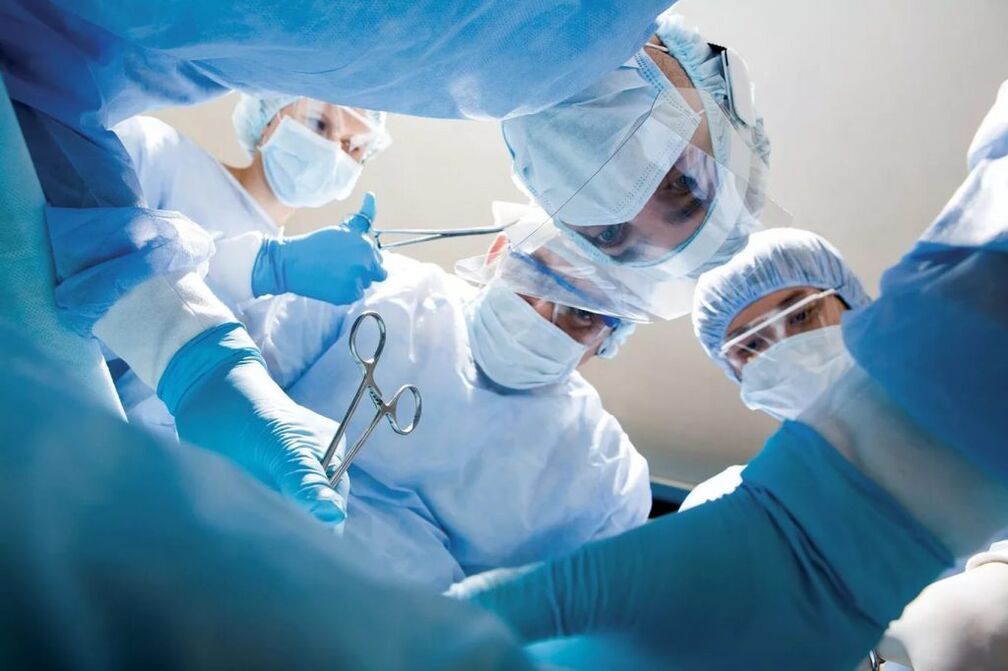
The surgery is prescribed in the last stages of the development of the disease and only with the ineffectiveness of conservative therapy.The assessment of the result of the treatment is carried out in six months.In the absence of effect, surgery is performed.The operation can be prescribed previously if unbearable pains occur or the paralysis of the limbs occurs.
Neck gymnastics
The treatment of the pathology of the house is based not only on the use of drugs, but also on the execution of special exercises.Operating therapy is prescribed by a doctor.The lessons are performed only during the period of remission of the disease.To get rid of the intervertebral pinches, it is recommended to perform these exercises:
- Lying on the stomach with emphasis on the floor, the head and body is performed.The exercise is repeated 2-3 times with the fixation at the top of 2-3 minutes.
- Lying on the stomach, they perform repetitions in one and the other, touching the floor of the floor.The number of repetitions is 7 in every direction.
- Sitting on the floor, leaving forward towards the chin of the chest, after which they lean backwards, throwing your head back.The exercise is performed 10-15 times.
- Sitting the palms of the forehead and prizes.So press the head in the palm of the hand.The number of repetitions is 2-3.
- Staying, they rotate their heads first in one, then in the opposite direction.The number of repetitions is 10.
Physiotherapy
To get rid of cervical osteochdrosis, physiotherapy procedures are also prescribed.This treatment helps to get rid of the symptoms of the disease and helps to restore wounded cartilage.The following procedures are usually prescribed:
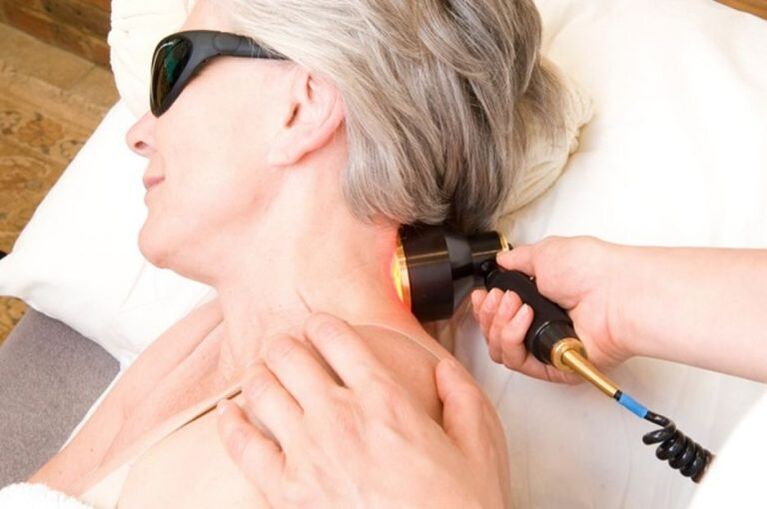
- Laser therapy.The essence of the method is the effect of the laser on the affected areas of the spinal column.This improves blood microcirculation and stops the inflammatory process.
- Electrophoresis.The procedure is performed with painkillers.The essence of the method is the effect on the wounded parts of the body with a small charge of electric current to pass the ions together with drugs in the damaged area of the spine.
- Ultrasound.The procedure improves metabolic processes that occur in the cells, stops pain syndrome and stops the inflammatory process.
- Magnetotherapy.Relieves swelling of soft tissues and eliminates pain syndrome.
In order to increase the effectiveness of therapy, it is also possible to prescribe treatment methods:
- massage of the cervical-brotera area;
- manual therapy;
- acupuncture and other procedures.
Nutrition
The treatment for cervical osteochondrosis will be ineffective if some nutritional rules are not respected.The diet will help:
- Avoid the occurrence of a lack of beneficial substances, since vitamins and minerals are involved in the metabolic processes of the cells of the intervertebral discs;
- Normalize the body weight, which will reduce the load on the spinal column;
- To minimize the probability of sclerotic changes in the blood vessels, thus reducing the risk of blood supply altered to the brain.

The basic principles of correct nutrition for cervical osteochondosis:
- The diet should be balanced with the daily dosage of the Kilocalories-120-1500;
- The food is taken in small portions 5-6 times a day;
- Observe the drinking regime to prevent dehydration of the tissues of the intervertebral discs - at least 1.5 liters of liquid are drunk per day;
- limit the consumption of salt, since it maintains the fluid in the body, causing the appearance of swelling of the tissues;
- limit the consumption of starch and flour products;
- Exclude fat, fried, spicy, smoked by the diet;
- Refuses to use alcohol and sweet carbonated drinks, as well as keep the juices in boxes;
- Fresh vegetables and fruit, lean meat, lean varieties of fish, cereals, milk and acid milk products with a minimum mass fraction of the fat content are introduced into the menu.
Tibetan applicator
Even with cervical osteochondosis, doctors recommend using a Tibetan applicator to improve the condition.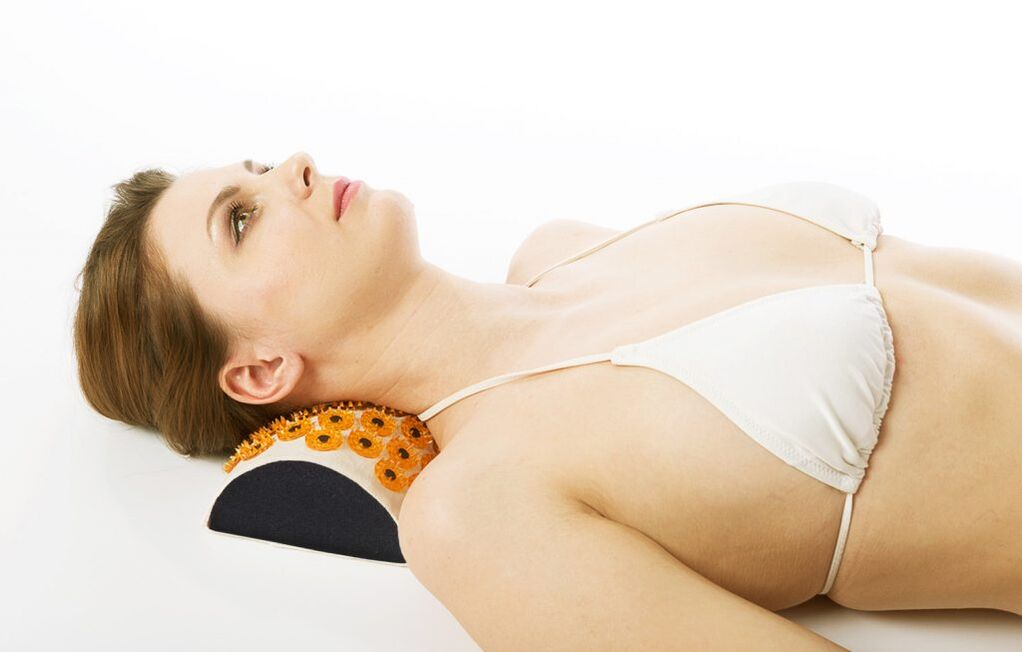 This is a device with plastic peaks, which affect the epidermis.The patient applies the applicator in the problem of the problem and occupies a lie position.As a result, the receptors of the epidermis that take part in the physiological processes of the body are annoyed.
This is a device with plastic peaks, which affect the epidermis.The patient applies the applicator in the problem of the problem and occupies a lie position.As a result, the receptors of the epidermis that take part in the physiological processes of the body are annoyed.
This procedure provides the following result:
- The direction to sleep is normalized, the quality and duration of night rest improves;
- Pain syndrome stops;
- Blood microcirculation improves;
- The mobility of the joints is restored;
- Performance has increased.
The Tibetan applicator has contraindications:
- Pathology of the epidermis;
- diseases caused by infections;
- vascular diseases;
- Oncological pathologies of a malignant nature.
You can only use the device after consulting a specialist.
Popular treatment
The use of non -traditional medicine is another way to treat cervical osteochondosis.These drugs are used only with the doctor's permit.Public medicine increases the effectiveness of drug therapy.For the treatment of the disease, it is impossible to use as independent drugs.Below are the recipes for the preparation of non -traditional medicine for the treatment of osteocondrosis.
Compressed of the cabbage

A fresh cabbage leaf is slightly beaten with a hammer to soften.Subsequently, it is resolved on the area of the problem and isolated.The picture is maintained for several hours.The procedure is performed daily.Instead of the cabbage sheet, you can use horseradish leaves.
Hop based ointment
The necessary components:
- Hops of hops cut in powder - 1 large tablespoon;
- Butter - 1 big tablespoon.
The products are connected and mixed.The resulting composition is treated with the affected area and fixing the insulating bandage.The picture is maintained from a few minutes to several hours.The procedure is performed daily.The ointment is kept in the refrigerator.
Compressed of the carl honey
Necessary ingredients:
- Grateful raw potatoes - 1 large tablespoon;
- Honey - 1 Great Spoon.
The components are mixed and positioned in a piece of gauze.The picture is solved on the problem of the problem for 20 minutes.The procedure is performed once every 7 days.
Disease prevention
The following preventive measures will help to avoid the occurrence of the pathology:
- Guide an active lifestyle: to play sports, the best swimming;
- enrich the diet with products containing magnesium and calcium;
- Several times a day to make a heat -Up during the session work;
- Use orthopedic beds for night rest;
- Take a hot shower every day for 10 minutes;
- abandon excessive physical effort;
- Visit a doctor regularly and perform the treatment of pathologies in a timely manner, which can cause the occurrence of the cervical osteocondrosis.
What is the dangerous osteochondosis of the neck
The main danger of the disease is that the lack of timely and qualified therapy can cause complete immobilization of the joints, which leads to disability.In addition, the pinching of the cervical vertebrae negatively affects the blood supply to the brain.As a result, headaches and other appropriate diseases occur.For this reason, you cannot ignore the pathology.
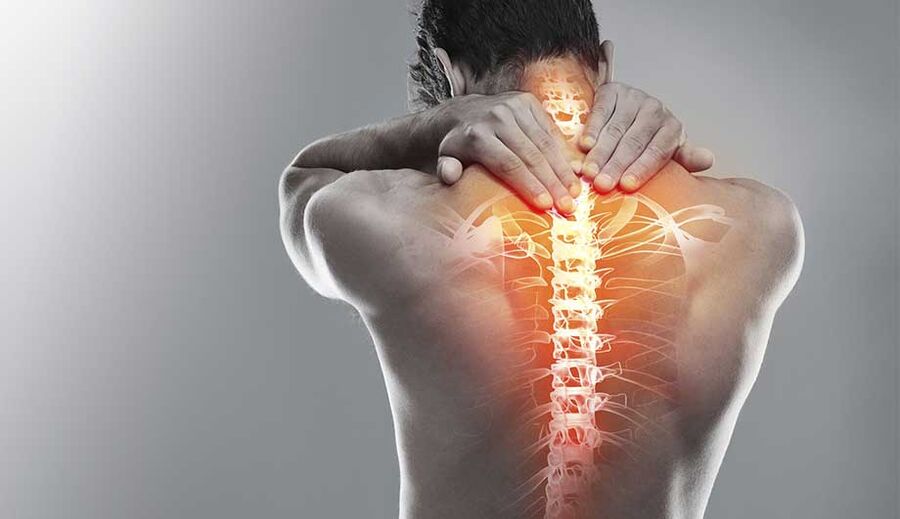
Cervical osteochondrosis is a pathology of the spine, which in the absence of timely qualified therapy leads to sad consequences.To prevent this from happening, it is recommended to consult a doctor after the first symptoms of the disease.















































